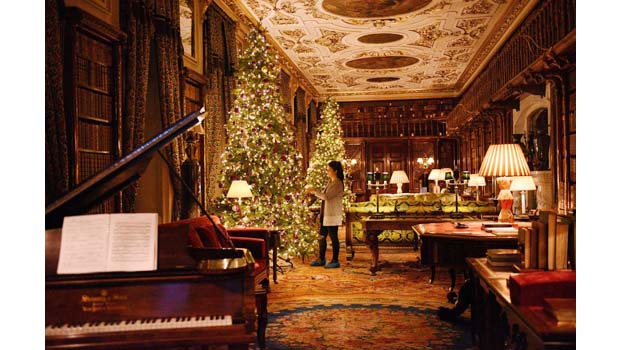Let’s hope Britain’s Christmas Covid hangover isn’t fatal
The decision to allow the mixing of three households over the festive period isn’t the smartest Covid move

One of the first rules of sound parenting is “be consistent.” If you mix your messages, you lose credibility and compliance goes out the window. Something similar applies to governments, which is one reason why Boris Johnson’s five-day Christmas reprieve for England is worrying. The other reason is even more straightforward: If you want to avoid a third wave of infections before a vaccine arrives, then telling people it’s okay to have a party isn’t such a great idea.
England’s second national lockdown is over on Dec. 2. But some 55 million people in England (everyone except the lucky inhabitants of Cornwall, the Isle of Wight and the Isles of Scilly) will still be banned from mixing with other households indoors. That’s painful, but practical. Britain’s initial tiering system — assigning more severe restrictions to local areas with bad outbreaks — was introduced too late and rules were too lenient; infection rates rose rapidly, straining hospital capacity, and that landed the country in the grind of another countrywide lockdown.
The government will put its new three-tier local restrictions — medium alert, high alert and very high alert — to a vote next week, but the prime minister is already facing a backlash from some Conservatives in Parliament. They want evidence that the new measures are justified.
Johnson has made some concessions to the anti-lockdown camp. Tiers will be reviewed regularly, starting on Dec. 16. Those areas that manage to reduce infection rates may move down to a lower tier before Christmas. That’s meant to incentivize participation in mass testing and also stricter adherence to guidelines. So far, so sensible.
The other concession is more controversial. Johnson has also
agreed that between Dec. 23 and Dec. 27, up to three households can form a “Christmas bubble” and meet in homes in a “limited and cautious way.” There are no doubt well-behaved families (with appropriately grand houses) who’ll seat a limited number of guests a cautious two meters apart, giving each their own serving spoon with hand sanitizer between courses. There are people for whom “limited and cautious” is a good excuse to forgo dreaded festive gatherings entirely. But let’s face it, for many it will be a question of how many can we cram around the table.
Johnson has a political motive for trying to avoid being cast as the Grinch. While he has an 80-seat majority in Parliament, there are well-organized lobbies against government restrictions. He needs his backbenches to support a possibly imminent Brexit deal, or to shield him from the backlash if no deal is forthcoming.
You could also argue that he had little practical choice. There are plenty of signs of lockdown fatigue among Brits. On the weekends, I see groups of teenagers huddled together, or mothers with children gathered in the park. Nobody gives them a second look, even though only two people are meant to meet outside.
Would people really have held Christmas celebrations without their loved ones? How would Johnson have enforced a ban on indoor meetings: Send police to go knocking on doors? Ask neighbors to inform on each other?
Even so, it’s one thing to acknowledge the limits of interventionism and quite another to encourage an activity that scientists warn will lead to an increase in infections.
A number of prominent advisers, including from Johnson’s Scientific Advisory Group for Emergencies, have warned that the inter-household contacts over that five-day Christmas period will lead to increased transmission and hospitalizations.
It will probably cost lives; and it could mean more stringent lockdowns in January. One SAGE member, University College London Professor Andrew Hayward, said it would likely lead to a third wave of infections. The government’s chief medical adviser, Chris Whitty, has warned people not to hug elderly relatives when gathering, “if you want them to survive to be hugged again.”
When household meeting was banned in the north of England recently, Health Secretary Matt Hancock cited transmission within homes as the key reason. Similar advice was issued in the U.S., and it’s a phenomenon we’ve seen across Europe. The Centers for Disease Control’s Robert Redfield told U.S. governors in October that people were taking more mitigation measures, but “what we’re seeing as the increasing threat right now is actually acquisition of infection through small household gatherings.”
It’s admittedly difficult to find hard data on household transmission. But contact tracers report that a high number of contacts of those who test positive are people they’ve encountered in households (admittedly, this is due in part to the limitations of Britain’s tracing regime). One study of household transmission in Tennessee and Wisconsin showed high rates of infection with rapid spread. Oh, and Canadians celebrated Thanksgiving on Oct. 12 and guess what happened? Infection rates were already rising, but the proliferation of household gatherings seemed to light a fire under them.
Whatever the risk from five days of merry-making, it is far from zero. And the government has failed the consistency test. Many will take the cautionary note seriously. Others will see it as a government-given license to party. Johnson can only hope the hangover isn’t terrible.
(With assistance by Lara Williams)
Therese Raphael is a columnist for Bloomberg Opinion. She was editorial page editor of the Wall Street Journal Europe.
Source: Bloomberg




